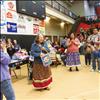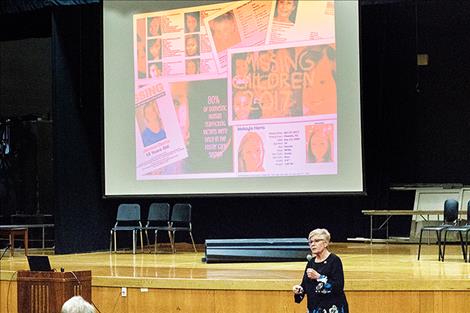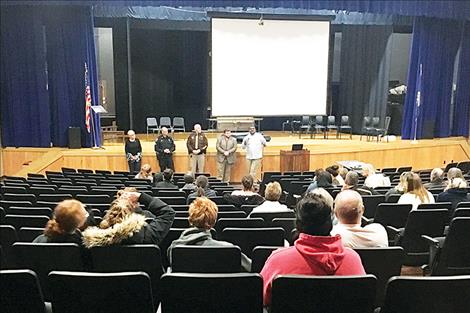Sex trafficking signs shared during event
Hey savvy news reader! Thanks for choosing local.
You are now reading
1 of 3 free articles.
POLSON – Many people dismiss human trafficking as more of a far-off international or distant big-city issue and mistakenly don’t realize that individuals are also exploited in the smaller cities within Montana.
“Human trafficking, it happens right here,” said Grace Manchala as she spoke to a crowd of approximately 100 attendees during a free community seminar on human trafficking. The event was held on Wednesday, Oct. 2, at the Polson High School auditorium.
According to the Department of Justice, human trafficking is the act or attempted act of recruiting, transporting, transferring, harboring or receiving a person by force, fraud, coercion or abduction for the purpose of exploitation. Several forms exist, including labor trafficking; sex trafficking; familial trafficking, where a parent or guardian exploits a child; and domestic trafficking, where a spouse, boyfriend or girlfriend exploits their partner.
“It’s an invisible crime. It’s a crime that happens in the shadows,” said Manchala. “Many are unaware that it’s happening in their community.”
Manchala belongs to an advocacy organization called Glory for Ashes. She works with Natalie Adorne from the Department of Justice; Brian Frost from the Department of Justice and local law enforcement officials.
“Human trafficking is a practice that happens here in Montana, specifically sex trafficking,” said Adorne.
“Traffickers know how to exploit weaknesses. They’re master manipulators who work to gain complete control over their victims by offering them what they don’t have: income, shelter, food, love and acceptance.”
Vulnerability and the trafficker’s ability to identify, capitalize and exploit is the common thread among victims of human trafficking, Adorne said. Vulnerabilities may be language or cultural barriers, lack of economic opportunity, age and even difficulties posed by geographic isolation, such as poor cellphone reception or Internet.
Warning signs of human trafficking might look like unexplained injuries, malnourishment, restrictive living conditions, inability to speak to individuals alone, age-inappropriate relationships, frequent pregnancies, addiction to drugs or alcohol, homelessness and answers to questions appear to be scripted.
More common red flags are staying at hotels, limited possessions, sexually explicit images on social media profiles, accompanied by someone who seems to control their every move and pre-paid cell phones.
Adorne said young girls are especially susceptible to traffickers. She said guardians should be concerned if they notice an unexplained, sudden increase in money, clothing or possessions like jewelry. Adorne also warned parents that social media and technology have outpaced a parent’s ability to monitor all the technology their kids are engaged with.
“Due to teens sharing way too much information online, a lot of trafficking starts through conversations initiated on the Internet,” said Adorne. “Parents have to have open and honest conversations with their children about strangers and the dangers online.”
To request help or report suspected human trafficking, call the National Human Trafficking Hotline at 1-888-373-7888 or text HELP to 233733.

















